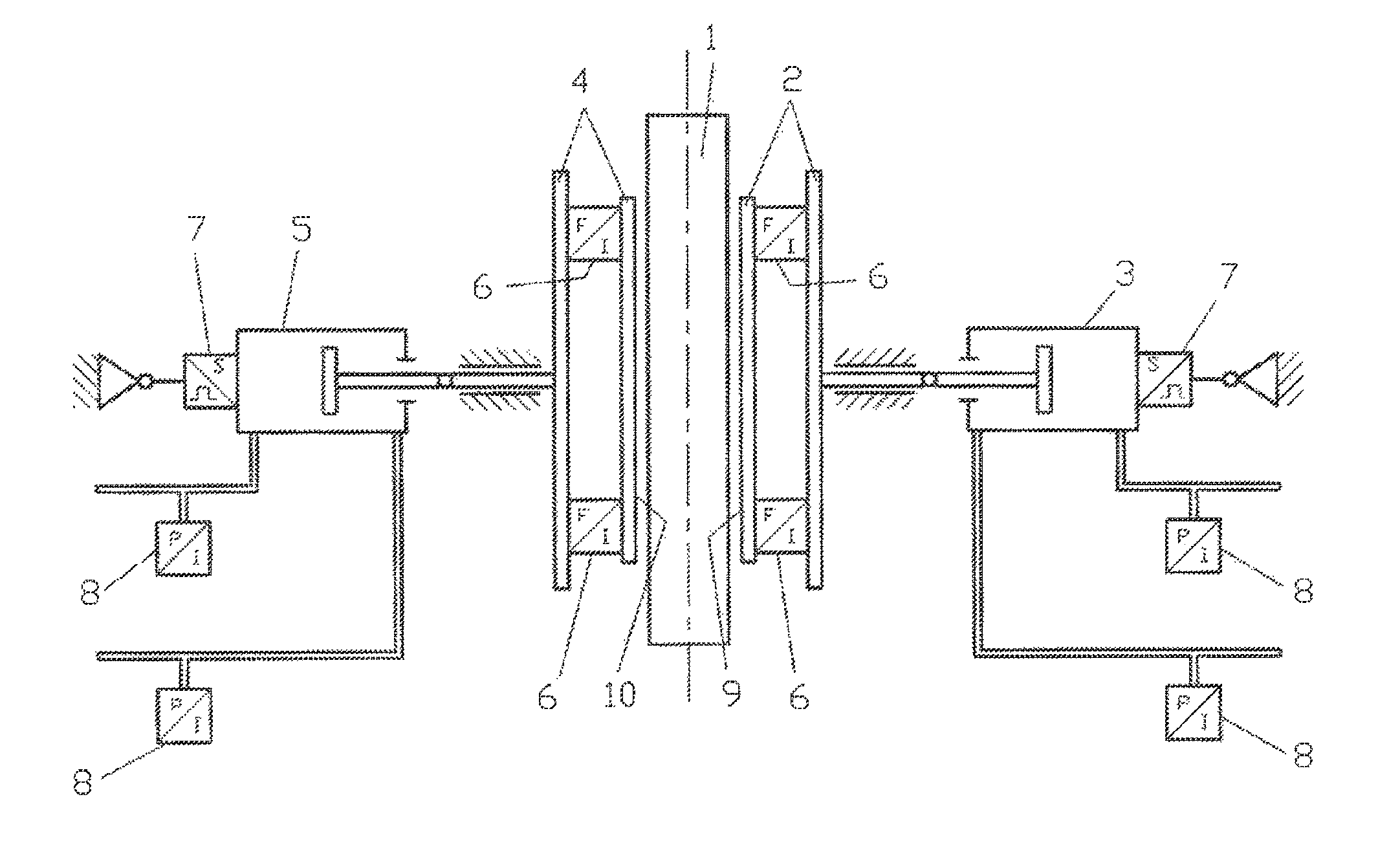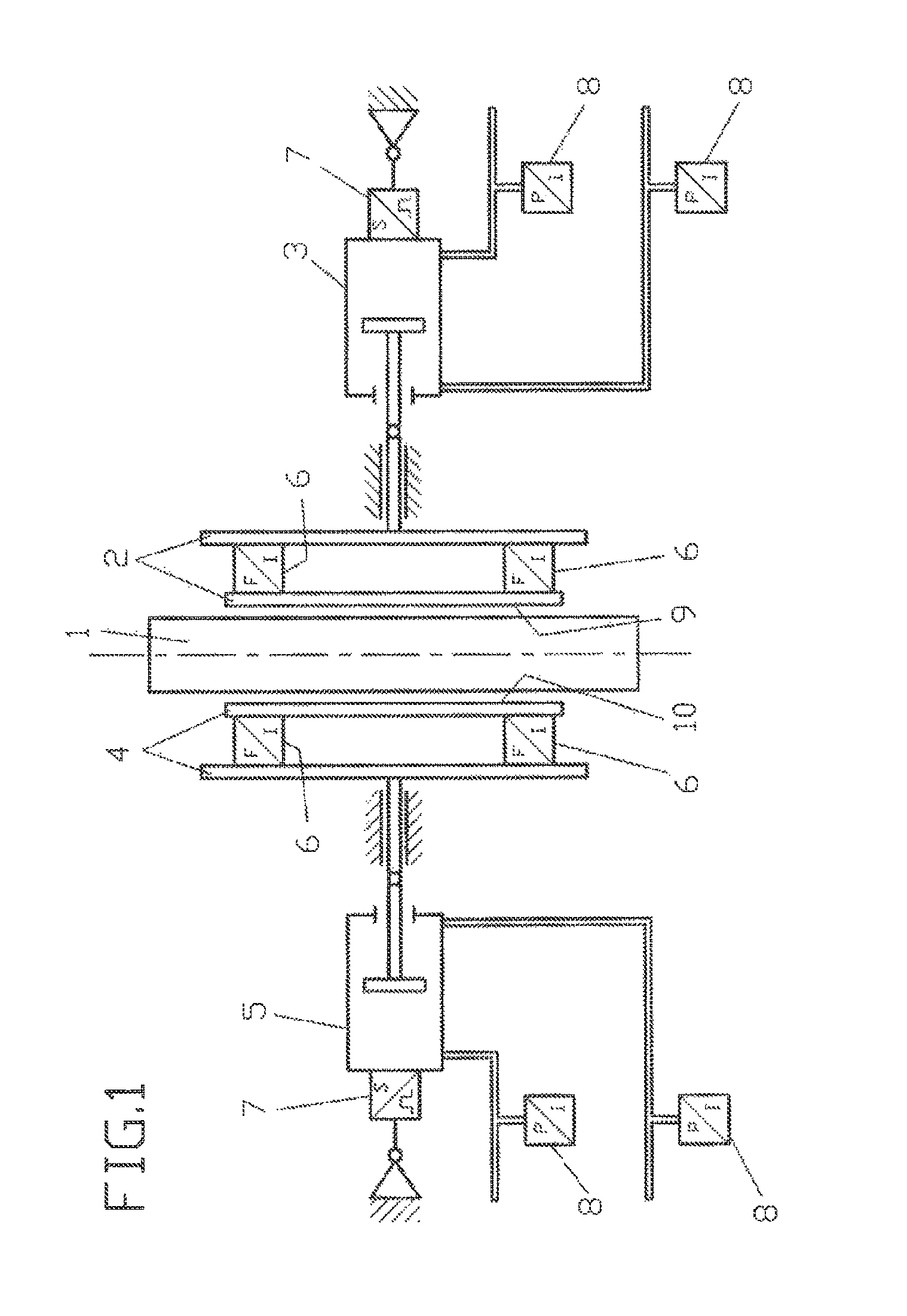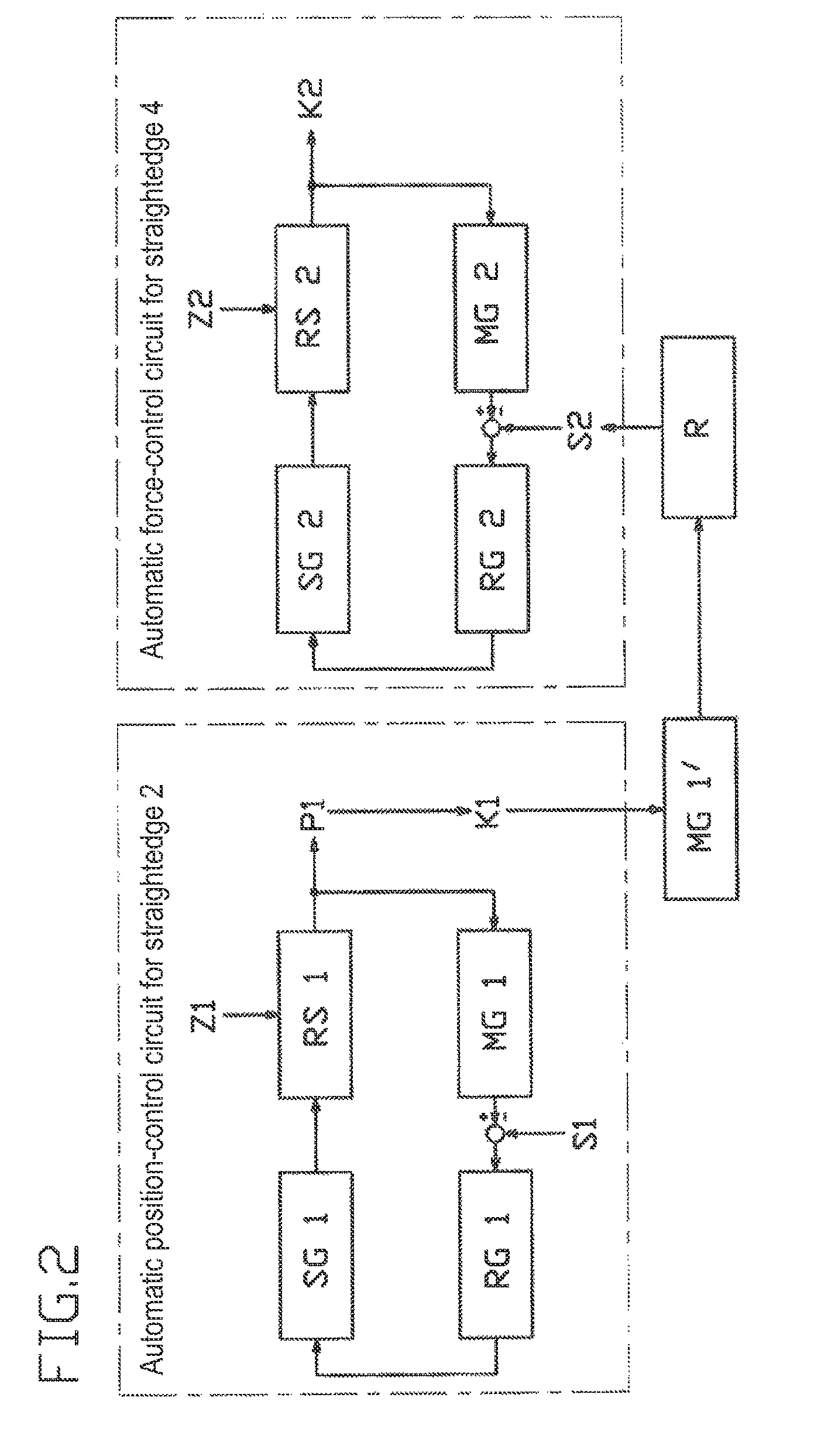Method for controlling side guides of a metal strip
a technology of lateral guide and metal strip, which is applied in the direction of metal-working feeding devices, roll mill control devices, manufacturing tools, etc., can solve the problems of reducing the braking effect of the strip, reducing the amount of energy needed to transport the strip, and no longer being able in all cases to adjust the strip, so as to achieve considerably improved automatic control of the system, the effect of significantly improving the influence of the guidance and prolonging the maintenance interval
- Summary
- Abstract
- Description
- Claims
- Application Information
AI Technical Summary
Benefits of technology
Problems solved by technology
Method used
Image
Examples
Embodiment Construction
[0021]FIG. 1 shows an example of an arrangement for implementing the inventive method. A metal strip 1, preferably a steel strip 1, is guided on both sides, i.e., both long sides, by lateral guides. Each of these lateral guides, which are known in themselves, comprises a straightedge 2, 4. The metal strip 1 can be contacted by the guide edges 9, 10 of the straightedges 2, 4. The straightedges 2, 4 are preferably pressed laterally against the strip 1 by drives or pressing devices 3, 5. As shown in FIG. 1, it is also possible as an option to provide force-measuring sensors 6 between the guide edges 9, 10 and the drives or pressing devices 3, 5 of the straightedges 2, 4. It is also possible for the straightedges 2, 4 to consist of several parts, as shown. The pressing devices 3, 5 can be formed , as shown by way of example, by hydraulic or pneumatic cylinders. Position sensors 7 are also provided according to FIG. 1; these sensors can measure the distance traveled by the pistons in the...
PUM
| Property | Measurement | Unit |
|---|---|---|
| forces | aaaaa | aaaaa |
| force | aaaaa | aaaaa |
| pressing force | aaaaa | aaaaa |
Abstract
Description
Claims
Application Information
 Login to View More
Login to View More - R&D
- Intellectual Property
- Life Sciences
- Materials
- Tech Scout
- Unparalleled Data Quality
- Higher Quality Content
- 60% Fewer Hallucinations
Browse by: Latest US Patents, China's latest patents, Technical Efficacy Thesaurus, Application Domain, Technology Topic, Popular Technical Reports.
© 2025 PatSnap. All rights reserved.Legal|Privacy policy|Modern Slavery Act Transparency Statement|Sitemap|About US| Contact US: help@patsnap.com



